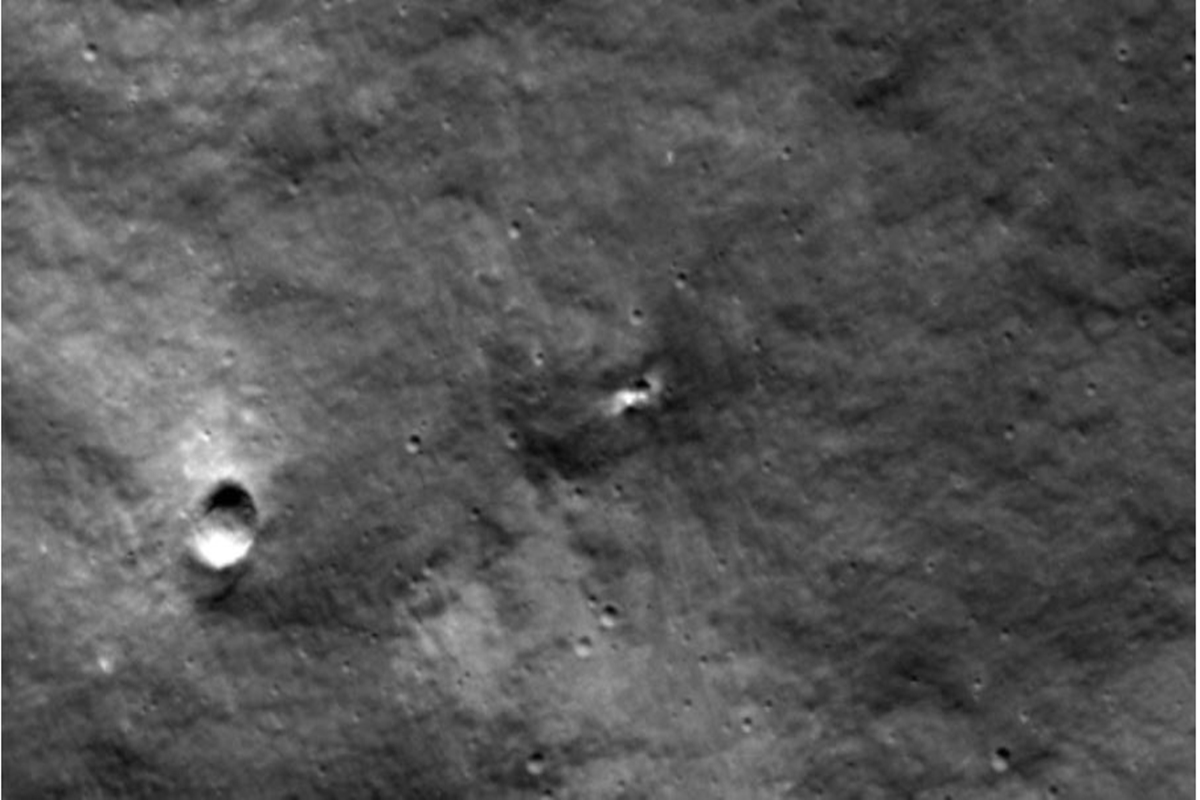NASA has reported that Russia’s Luna-25 probe likely created a 33-foot-wide crater on the moon’s surface last month when it lost control and crashed. This marked Russia’s first lunar mission in nearly five decades, but it ended in failure on August 19. Some NASA images reveal the lunar crater.
The mishap occurred when a thruster firing went off course, leading to a loss of communication and an incorrect orbital trajectory, as stated by Roscosmos, the Russian space agency.
Advertisement
Recently, NASA’s Lunar Reconnaissance Orbiter (LRO) spacecraft captured images of what the U.S. space agency described as a “fresh crater.” These images were taken after Roscosmos had published an estimate of the probe’s impact location.
“In light of its proximity to the estimated Luna-25 impact location,” NASA stated, “the LRO team deduces that it is probably a result of that mission, as opposed to a naturally occurring impact.”
The LRO team utilized the Lunar Reconnaissance Orbiter Camera (LROC) on August 24 to capture images of the area. Subsequently, they conducted a comparative analysis, contrasting these recent photographs with previous NASA images of the same region taken by LROC, with the most recent ones dating back to June 2022. This examination unveiled the presence of a newly formed, luminous crater on the moon, believed to have been created within the past 14 months.
Luna-25 had aspired to achieve the historic feat of executing a soft landing in the vicinity of the moon’s southern pole, an area believed to be abundant in water ice, offering the potential to sustain human habitats.
However, Luna-25’s setback relinquished this distinction to Chandrayaan-3, an Indian mission that embarked on its journey on July 14 and flawlessly touched down on August 23. Chandrayaan-3 is presently in the process of exploring its polar location, utilizing both a lander and a compact rover, both engineered to function for a complete lunar day, approximately equivalent to 14 Earth days. It is anticipated that both robotic systems will be rendered inoperable when lunar nightfall descends at the conclusion of this period.
Moscow has established a commission tasked with conducting a thorough investigation into the precise causes behind the Luna-25 probe’s crash.
The failure of this mission marked a significant setback for the Russian space program, which had been striving to elevate its capabilities, especially in light of the renewed interest in the moon’s southern polar region. This region holds the potential for ice deposits in permanently shadowed craters, a resource that could prove invaluable for future space endeavors, offering the means to generate breathable air, water, and even hydrogen rocket fuel.
Russia’s track record in independent space exploration has seen limited success since the Luna-24 robot’s lunar landing in 1976, where it collected roughly six ounces of lunar soil and successfully returned it to Earth, marking Russia’s third prosperous robotic lunar sample return mission.
In contrast, the United States, through its Apollo program, witnessed twelve astronauts stepping onto the lunar surface half a century ago. Curiously, no Russian cosmonauts have undertaken such a journey to date. Furthermore, Russia’s earlier post-Soviet deep space robotic missions, both directed towards Mars, ended in disappointment.











